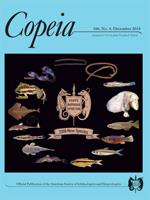Long-term demographic data are important for conserving populations of threatened and endangered species. Collecting data specific to the population of interest can improve conservation success by allowing managers to make informed decisions, evaluate the efficacy of habitat management, and assess extinction risk. Population viability analysis (PVA), a tool commonly used to estimate extinction risk in threatened populations, is most informative when precise, population-specific data are available. We used mark-recapture data spanning ten years (2008–2017) to estimate annual adult survival rates in a population of threatened Eastern Massasauga rattlesnakes (Sistrurus catenatus) in Barry County, Michigan. Using these survival estimates and ten additional parameter values obtained from our site and a nearby population, we modeled population viability over the next 100 years. We performed sensitivity analysis using Latin hypercube sampling, followed by logistic regression to assess the relative influence of model parameters on extinction risk. We estimated annual apparent survival rates of 0.79 (95% CI = 0.69–0.87) for adult males and 0.78 (95% CI = 0.69–0.85) for adult females, which are higher than expected given the population's locality. Results of our sensitivity analysis suggest that actions promoting high survival of adult females should be a management priority, followed by activities that facilitate high reproductive output and neonate survival. We recommend focusing future research and monitoring efforts on these parameters.
BioOne.org will be down briefly for maintenance on 17 December 2024 between 18:00-22:00 Pacific Time US. We apologize for any inconvenience.
How to translate text using browser tools
19 October 2018
Sensitivity Analysis Using Site-Specific Demographic Parameters to Guide Research and Management of Threatened Eastern Massasaugas
Danielle R. Bradke,
Robyn L. Bailey,
Jeffrey F. Bartman,
Henry Campa,
Eric T. Hileman,
Caleb Krueger,
Nathan Kudla,
Yu Man Lee,
Arin J. Thacker,
Jennifer A. Moore
ACCESS THE FULL ARTICLE





